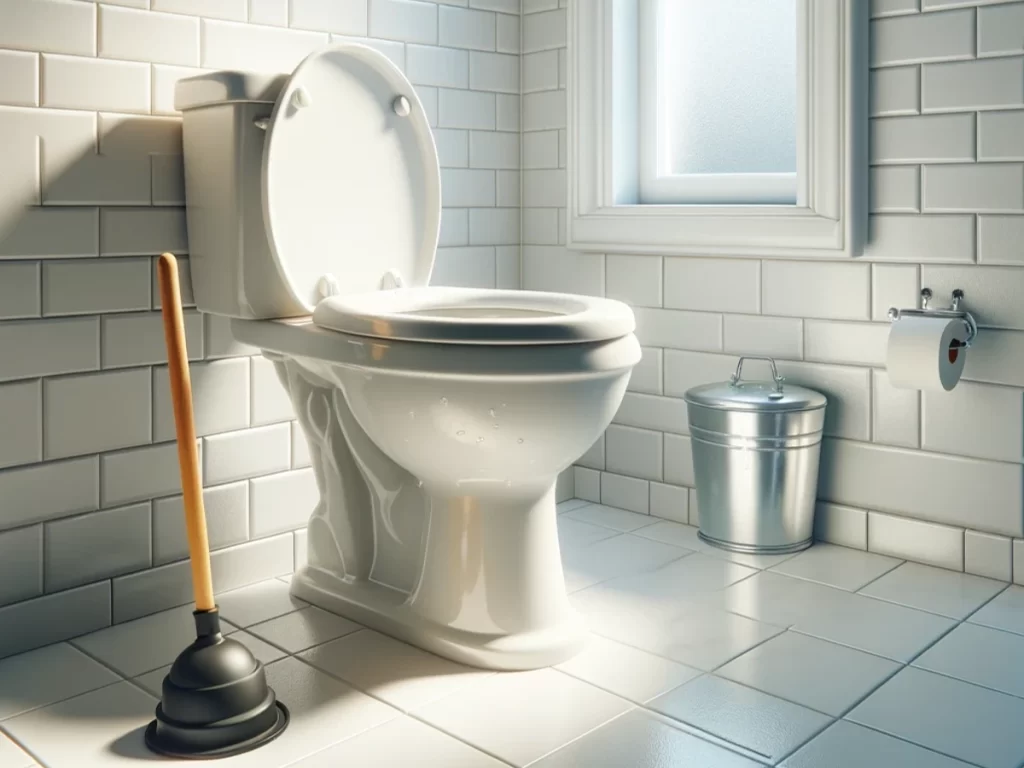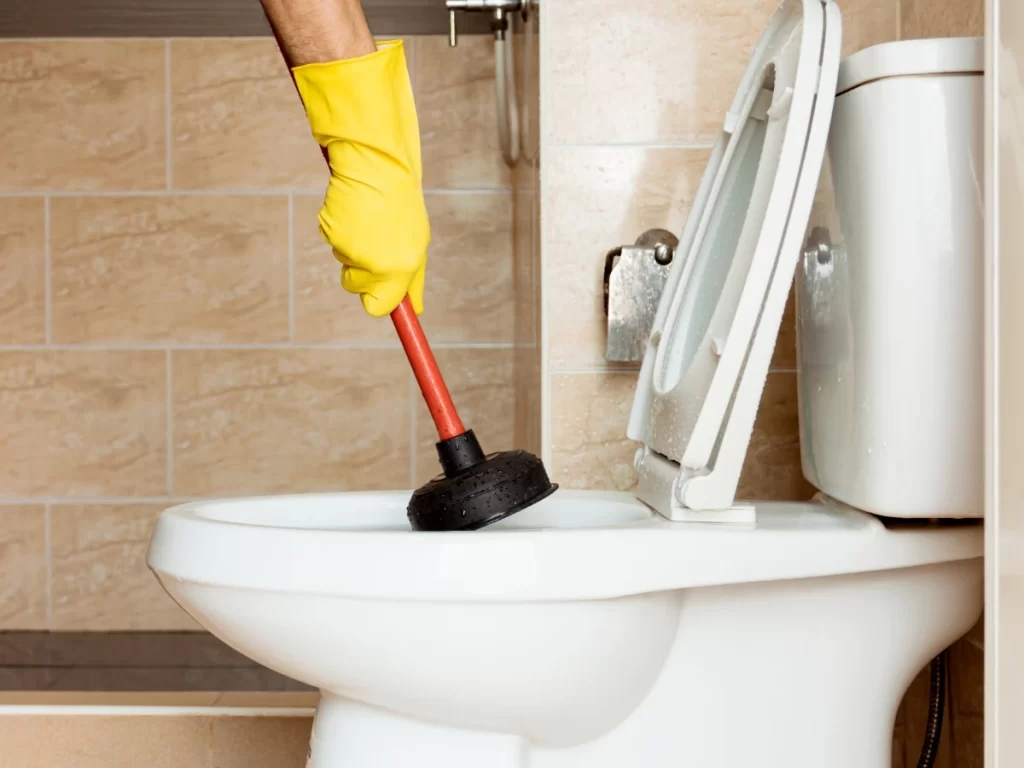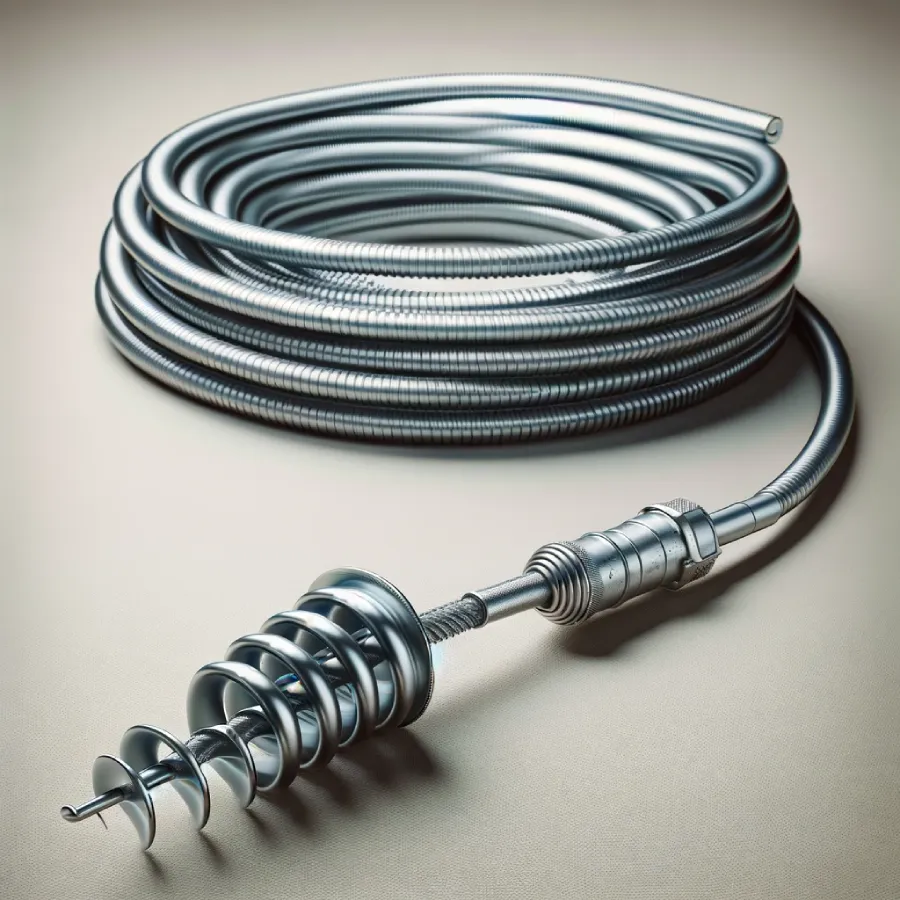
Here’s a quick breakdown on how to unclog a toilet, even when your plunger fails you!
- Plunger First: Use a plunger with firm, consistent motions for initial attempts.
- Toilet Auger: If plunging fails, employ a toilet auger to reach deeper clogs.
- Mainline Drain Snake: For deeper clogs, carefully use a mainline drain snake, considering your plumbing layout.
- Flush Wisely: Avoid flushing non-biodegradable items like feminine products and plastic.
- Biological Solutions: Use products like BioCide to maintain clear drains by breaking down organic material.
- Professional Help: When in doubt or facing stubborn clogs, consult an expert 24-hour plumber.
Encountering a clogged toilet can be more than just an inconvenience; it’s a common household plumbing challenge that requires the right approach to resolve effectively.
Whether you’re faced with a minor blockage or a more stubborn clog, understanding how to tackle this issue is crucial for any homeowner.
In this article, we draw insights from the latest episode of “Ask the Trade Pros,” where experienced Tucson plumbing professionals Jordan and Todd share their expert advice on DIY methods for unclogging toilets.
You can listen to the PodCast episode below:
From traditional plunging techniques to more advanced tools like toilet augers and mainline drain snakes to fix your toilet, at Done Rite Services, we’ve got you covered.
Additionally, if you have a leaky faucet or suspect a water leak, our comprehensive leaky faucet repair and professional water leak detection services can help.
Finally, we’ll cover when to hire a professional plumbing company to deal with your toilet issues.
Table of Contents
1. Understanding Clogs: The Basics Behind Toilet Blockages
Dealing with a clogged toilet begins with understanding what causes these unwelcome blockages. Most clogs occur when materials that are too bulky or non-biodegradable are flushed down the toilet.
Common culprits include excessive toilet paper, feminine hygiene products, wet wipes, and even smaller objects like cotton swabs or dental floss.
Furthermore, the age and design of your plumbing system play a significant role. Older homes may have narrower pipes or plumbing constructed with less clog-resistant materials, making them more susceptible to blockages. Another factor is the toilet’s flushing power, with some models having a weaker flush that’s less effective at clearing the bowl.
Understanding these causes is the first step in tackling toilet clogs. By being mindful of what goes down your toilet and considering the specifics of your plumbing, you can significantly reduce the risk of clogs and handle them more effectively when they do occur.
2. How to Unclog a Toilet with a Plunger: The First Line of Defense

When you’re faced with a clogged toilet, your first tool of choice should be a plunger.
This common household item can be remarkably effective for clearing most blockages, especially when used correctly.
To unclog a toilet with a plunger, start by ensuring you have a good seal between the plunger and the toilet’s drain hole. This seal is crucial for creating the vacuum and pressure necessary to dislodge the clog.
Begin with a gentle plunge to avoid splashing, then increase the force. The key here is persistence and technique rather than brute strength.
A mix of steady and forceful plunges often does the trick to clear the blockage.
In cases of a stubborn clog, however, you might need to repeat the process several times. Remember, plunging is an effective way to unclog a toilet fast, but it requires patience and the right amount of force. For more persistent clogs, consider using a reliable drain cleaning service.
While plunging is a common first step in how to unclog a toilet, it’s important to recognize when it’s time to switch tactics.
If repeated plunging doesn’t resolve the issue, it might be necessary to explore other methods, such as a toilet auger, to address the clog effectively.
3. Advancing to a Toilet Auger for Tougher Clogs

When a plunger isn’t enough to clear a clogged toilet, it’s time to consider using a toilet auger, a more advanced tool designed for stubborn blockages.
A toilet auger, sometimes known as a plumbing snake, is specifically crafted to navigate the intricate curves of a toilet trap and reach clogs that are out of a plunger’s reach.
To effectively use a toilet auger, carefully feed the cable into the toilet bowl, ensuring you don’t scratch the porcelain.
As you extend the auger, twist the handle to help it snake through the bends and break up the obstruction.
This action helps in reaching deeper clogs that typical plunging can’t resolve, making it an essential method in how to unclog a toilet when nothing else works.
It’s important to use the auger with care, as improper handling can damage your toilet and plumbing.
If you find that the auger is not clearing the clog or if you encounter resistance, it’s wise to halt and reassess.
Sometimes, the blockage might be severe enough that you need professional assistance, especially in how to unblock a badly blocked toilet.
Remember, while the toilet auger is a potent tool in your DIY plumbing arsenal, knowing when to escalate the issue to a professional plumber is crucial to prevent further complications.
4. Preventative Measures: Keeping Your Toilet Clog-Free
Maintaining a clog-free toilet goes beyond just handling existing blockages; it’s about adopting preventative measures to avoid future issues.
A key strategy in keeping your toilet functioning smoothly is being mindful of what you flush. Items like feminine hygiene products, wet wipes, and even certain thicker toilet papers can easily lead to a toilet clog, especially in older plumbing systems.
Another effective approach is the use of biological solutions like BioCide. These products work as a probiotic for your drains, breaking down organic material that could potentially lead to blockages.
This method is particularly beneficial for long-term maintenance and can significantly reduce the likelihood of experiencing a clogged toilet.
Regularly inspecting and maintaining your toilet can also prevent many issues. This includes checking the flushing mechanism and ensuring the water level in the tank is appropriate. Simple actions like these can be pivotal in how to prevent a toilet clog.
Lastly, it’s crucial to educate everyone in your household about what should and shouldn’t go down the toilet.
Awareness and proper usage are your best defenses against the inconvenience of a clogged toilet. By following these preventative tips, you can save yourself the hassle and potential expense of dealing with frequent blockages.
5. When to Call in the Professionals: Recognizing the Limits of DIY
There comes a point in dealing with a clogged toilet where the best course of action is to call in a professional plumber.
Recognizing when a situation is beyond DIY solutions is crucial for preventing potential damage to your plumbing system.
If you’ve tried a plunger, a toilet auger, and other methods like hot water or natural cleaners, but the toilet remains clogged, it might be time to seek trusted water heater repair services.
A professional plumber has the tools, expertise, and experience to handle complex blockages safely and effectively.
They can also identify underlying issues that might be causing frequent clogs, such as problems with your main sewer line. For instance, if your toilet keeps clogging despite repeated efforts, this could indicate a deeper issue that requires a professional assessment. Additionally, regular maintenance and professional water leak detection can help prevent recurring issues.
Additionally, if you’re uncomfortable using tools like a mainline drain snake or if you’re unsure about your plumbing’s layout and materials, it’s safer to rely on a professional. They can ensure that the unclogging process is done correctly without causing damage to your pipes or toilet.
In summary, while many toilet clogs can be resolved with DIY methods, knowing when to call in a professional is an important aspect of how to fix a clogged toilet. For those in Oro Valley, Done Rite Services offers comprehensive plumbing services in Oro Valley to assist with all your plumbing needs.
It ensures that your plumbing remains in good condition and can save you time and effort in the long run. If you’re dealing with a clogged toilet or similar plumbing emergency in Tucson, Arizona or the surrounding area, be sure to contact Done Rite Services or send us a message. Additionally, you can explore our blog for more plumbing tips and guides, such as maintaining healthy plumbing systems and water softeners explained.
